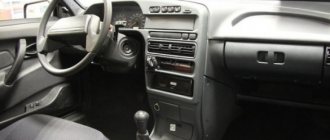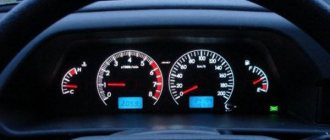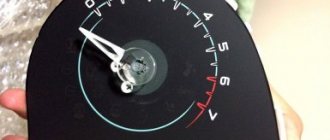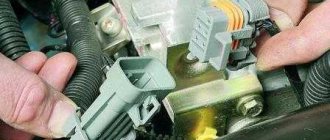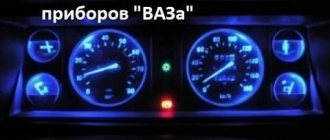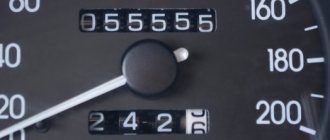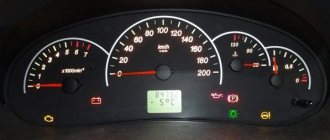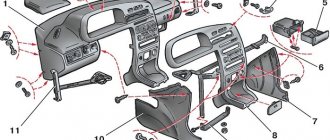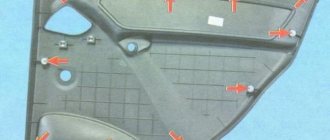How to remove a torpedo on a grant video
Part one is here
We disassemble the car, remove the dashboard, make noise and are now at the stage of reassembly with sound insulation and additional bauble being carried out along the way.
And so we continue to slowly cover the floor of the car with vibroplast.
After sealing the motor shield with vibroplast, we seal the entire shield with Biplast. With it there is the greatest chance that the torpedo will fall back into place. We cover the stove and air duct pipes with the same material.
We weight the torpedo with a vibroplast and pass it through from above with a biplast. We seal the edges of the torpedo with an anti-creaking agent - also known as madeleine.
We put the standard sound insulation back on the engine shield and begin to go through the floor. There are various rumors about this material that it creaks almost immediately and picks up moisture, but while I’ve been riding for almost 3 months, everything is fine, the floor doesn’t creak anywhere.
We lay out the wiring for limit switches and door activators, drag back the amplifier, video camera and other things. General view before splenium like this.
We throw back the torpedo beam, lay the wiring for seat heating, music and signaling. Don't forget to make reserves of wires for future inventions. And we continue to lay the splen.
After installing the splen, we put back the standard Shumka, admire it, smoke
Well, then we sketch out the floor and start working on the doors.
We threw on a radio tape recorder so that it wouldn’t be boring, made noise on the door foam with an acoustic vibroplast, then we put a ring under the speaker and prepared to plug the internal openings of the door with a vibroplast. The door trim itself made noise with vibration, then with biplast and at the edges with madeline (Anti-creak). We placed podiums under the speakers and assembled the doors.
Well, the mood was completely lifted when the torpedo sat in place, all the wires found their place and the assembly of the interior began.
Then they didn’t remove it anymore, like the floor in the cabin, they finished the trunk, glued the plastic panels of the pillars and the rear parcel shelf with vibra and madeleine, put the belts back, and assembled them. The MMC 2190 radio arrived and was installed. After playing with the “miracle TV”, we installed seat heaters and put the seats in place. Next came the DVR and I would like to talk about it separately.
Removing the instrument panel (torpedo) on a Lada Granta car is carried out to replace it with a new one in case of severe damage or replacement of component elements, as well as when carrying out various work in which the presence of a torpedo will interfere. To perform the repair, you will need socket heads “13” and “24”, as well as two screwdrivers with a flat blade and a Phillips blade.
In the process of dismantling the panel frame, you will have to disconnect a significant number of electrical connectors, which only a qualified technician can do. Therefore, if you are not sure, it is better to contact a specialized workshop.
Do the following sequence of actions:
- First of all, you need to de-energize the car; to do this, disconnect the minus terminal from the battery.
- We remove the cigarette lighter socket from its mounting socket and disconnect the block with wires from it.
- We remove the head unit and disconnect the antenna cable tip and connectors with wires from it.
- Remove the central trim of the instrument panel console.
- Next, remove the glove box cover.
- Remove the inner panel of the glove box by unscrewing the screws that secure it.
- Remove the lining of the front pillars.
- We remove the floor tunnel lining, after which we dismantle the steering wheel (the steering wheel must first be set to a position corresponding to the straight-line movement of the car)
- Remove the plastic cover of the fuse box, then the steering column cover and steering column switches.
- We dismantle the external lighting control unit, and then remove the headlight hydrocorrector regulator.
- We remove the instrument cluster and disconnect the connectors with wires from it.
- We unscrew the four screws securing the air duct damper control unit to the instrument panel.
- Unscrew the eighteen screws securing the decorative panel to the frame. Then we move the decorative panel away from the frame as much as the air ducts fixed on the inside allow.
- Carefully insert your hand and use a Phillips screwdriver to unscrew the screws securing the air ducts to the panel.
- Remove the decorative trim.
- Remove the windshield air duct by unscrewing the two screws securing it.
- We remove two bracket nuts from the torpedo brackets and move them to the air duct brackets.
- Having completed the necessary repairs, we carry out the installation in the reverse order.
And so I found some free time to describe a little the process of soundproofing my car. Let me remind you that the car was picked up from the dealer and went straight to my bay to install additional equipment. On the way I had to stop by and register it because... the car stood up for a long time and for more than half of the installation period (about 20-25 days in total) could not be driven - they took it apart well.
Along with the installation of the security complex, noise insulation, music installation, a DVR, and various other additions were made, which I will try to describe in the coming posts.
And so noise. It all started with disassembling the interior. They took it apart thoroughly and down to the bare metal. There were no unforeseen situations with disassembling the interior; the car is not complicated in this regard.
With the choice of the sound insulation material itself, everything was simple for us; in St. Petersburg there is such a brand as STP, it is easy to get, convenient to work with, and there is always material available for any task.
I'll start with the trunk lid. There was no need to disassemble it; in the factory configuration there is simply nothing there except a cambric, which is placed on the sharp edge of the metal so as not to cut your hand when closing the trunk. Before soundproofing, the lid is very light, which allows it to rise well when opened with the trunk tarsion bars in the middle position.
Along the way, we purchase a trunk lid trim for the grant with an emergency sign and make noise with an STP AERO vibrator, followed by Biplast.
The noise inside the lid is not very convenient, you have to push it. It is best to press the Shumka with a roller, which is sold at the same STP or together with the Shumka. In general, I had experience working with a machine without a roller - I wiped out all my hands and couldn’t work with them for 5 days - you shouldn’t skimp on this thing.
We install the rear view camera in the lock cylinder and begin to assemble
➤ Grant rear door trim - removal and installation
The rear door card is most often dismantled due to deformation, failure of the window lifter guides, or the handle. The process of replacing the rear door yourself is within the power of every car enthusiast, but it requires care. The mounting pattern is typical on all models of the Lada Granta family.
Preparatory stage before removing the rear door on the Lada Grant
Required materials, tools for disassembly:
- set of car keys, sockets, ratchet;
- rags;
- liquid WD – 40;
- new rubber seals, plastic clips (as needed).
Stage No. 1: remove the casing
- We place the car within the perimeter of the repair area, remove the terminals from the battery.
- Open the rear left (right) door and raise the glass all the way up.
- We unscrew the blocker - the so-called soldier.
- Use a screwdriver to pry up the plastic window handle.
- We remove the latch and remove it from the grooves.
- We dismantle the handle assembly.
- Use a screwdriver to pry up the body of the outer door handle and unscrew the two bolts - the retainer.
- We remove the lower right corner of the card and remove it from its seat. We carry out the work carefully, since the plastic clips are fragile and can be damaged (10 in total).
- Remove the card counterclockwise.
- We remove the door lock rod from the card.
- Using a Phillips-head screwdriver, unscrew the two screws securing the handle to the body part.
- We remove the base of the handle from the seat.
- We remove the rod, the handle lever.
- On the inside of the seal, unscrew the screw to remove the plastic decorative insert and remove it.
- Remove the rubber seal from the rear guide.
- Using an “8” socket, unscrew the bolt securing the guides at the rear of the door, from the end.
- We remove the guide from the door opening.
- We remove the piston from the hole in the door and remove the seal.
- Align the glass and unscrew the bolts securing the holder.
- After the door card is removed, raise the glass to the upper position and secure it with masking tape for safety purposes.
- Remove the foam pad from the handle shaft.
- Using the “8” socket, unscrew the three bolts securing the window regulator module to the door body.
- By analogy, unscrew the two nuts at the bottom of the mount.
- We remove the window lift mechanism from its regular place.
Window lift mechanism
Stage No. 5: dismantling the outer handle
- Using the “8” head, unscrew the handle fastening from the back side.
- By analogy, we unscrew the bolts from the front part.
- We move the handle to the side and remove the rear door trim on the Lada Granta.
- We remove the metal rod from the plastic holders.
- Using a Phillips screwdriver, unscrew the intermediate fastening of the locking rod.
- We remove the rod from the clamp.
Unscrew the bolts
- From the end of the door, unscrew the three screws that secure the lock to the body.
- Disconnect the block with wires and remove the electric drive assembly.
- We disconnect the plastic corrugation from the door pillar.
- Disconnect the block from the wiring.
- Using a spanner wrench set to “17”, unscrew the upper and lower fastenings, having previously unfastened the limiter.
This completes the process of dismantling the body element and its components on the Lada Grant.
We install the rear door in the reverse order.
Catalog articles for rear door components
The given dimensions are calculated in mm
For most drivers, the standard sound system is sufficient, as are the speakers. But lovers of high-quality sound practice installing podiums and spacers.
The installation process on the rear doors is similar to the installation on the front doors. We carry out the work ourselves, the principle of operation is intuitive.
- We clearly determine the size and shape of future speakers. For this purpose, we remove the map, apply speakers to the holes, and calculate the parameters of the podiums. How to dismantle the card on the Lada Grant is written at the beginning of the article.
- We cut out the blanks ourselves according to the drawings or purchase standard designs in the store. We join it to the body with foam.
- We connect the speakers to the block with wires; the manufacturer initially laid the cables in the rear circuit.
- We install protective nets and check that they are working correctly.
How to remove a torpedo on a Kalina video
In order to remove the center console (the black trim on the instrument panel) of the Lada Kalina, we will need a Phillips screwdriver and a lot of patience, especially when installing it later, so we will have to be patient.
- The first step is to remove the cassette player, if you have one installed, and disconnect the wires connected to it.
- It is also better to remove the metal insert in which the radio is mounted to make removal easier. After it has been removed, we press on the back side of the plugs, which are located on both sides of the “Hazard Alarm” button.
- And unscrew the two bolts securing the lower part of this lining, which are located under these plugs with a Phillips screwdriver:
- Then you need to remove the three heater adjustment levers, which are marked below in the photo with numbers 1, 2,3. They are easy to remove; just pull them with a little effort.
- Now, disconnect the plug from the hazard warning button:
- After this, you need to slightly pull the lining towards you, starting from the very bottom, overcoming the obstacle of the metal clamps, and pull the lining out of its seat.
- To remove it completely, you need to disconnect all the wires that lead to the lighting bulbs and fan speed control:
Removing the console
Now we need to start sequentially disassembling the panel in Kalina into parts. How to disassemble the panel?
- Remove the ashtray: pull it towards you as far as it will go and unscrew the 4 screws that secure it.
- After this you can get to two plugs. They are located on the sides of the emergency lights. Use a flathead screwdriver to pry it off and set it aside.
- We unscrew the screws that are located under the plugs. These fasteners from below hold the console.
- After the two screws are removed, pull the console (shield) towards you, but slowly so as not to break the wiring. We disconnect the wiring, first marking the wires so as not to confuse which is which later.
- Now unscrew the steering wheel cover. It is held in place by 2 bolts, for which a 10mm wrench is useful, and 5 self-tapping screws.
- Next, disconnect the instrument panel cover. There are only 2 screws here.
- The top panel is secured with nuts. There must be at least 7 of them.
- As you can see, the stove air duct is tightly fixed. What to do? You will have to rip off 2 lock washers and unscrew the remaining screws, which, in fact, secure the panel in place. Only self-tapping screws are enough for fastening.
- Next, you can try removing the steering wheel. If it doesn’t work out, you’ll have to work a little harder and find the remaining fasteners. In any case, we look for all the hidden screws and unscrew them to the last.
- Pull the panel towards you. If it gives in, it means everything is unscrewed. If somewhere she doesn’t want to move away, we arm ourselves with a screwdriver and unscrew the hidden fasteners.
- After this you can disconnect it.
Tuning the instrument panel is one of the main reasons why a torpedo and its adjacent parts are disassembled. Lada Kalina is not distinguished by its bright design and interesting design. What can you do about it? Install panel lighting.
This solution will help improve the visibility of indicators. In addition, the perception of the interior will change. You can also change the panel to another one or repaint its parts. Such tuning of the instrument panel is a radical measure, but absolutely justified. The plastic the panel is made of is simply terrible.
You need to fit the parts well and tightly, then no sounds will occur. If you first mark the wiring, then connecting all devices should not be difficult.
This stage involves removing the Lada Kalina torpedo into its component components.
- Remove the ashtray: pull it towards you and unscrew the 4 screws. They keep her in her nest.
- Next we get to a pair of plugs, which are located on both sides of the emergency button. They need to be pryed off with the same screwdriver and put aside.
- Let's move on to the screws located under the plugs. It is these mounting components that hold the console underneath.
- Having unscrewed a couple of screws, we begin to pull the console towards us. We do it slowly in order to avoid a break in the electrical connections.
- We disconnect the cable blocks from the sockets of the current collectors, simultaneously marking them.
- It's time to unscrew the steering column cover. It is held in place by a pair of size 10 bolts and five screws.
- We unscrew the screws (2 pcs.) holding the casing of the panel itself.
- The upper section of the panel is held in place by nuts, the number of which should be seven. We “defeat” them.
- Removing the stove air duct is problematic. To “surrender” it, we tear off two lock washers, and then unscrew the remaining list of screws. During subsequent installation of this particular small unit, it is enough to use only screws.
- We look for all the “hidden” screws around the perimeter and “sentence” them to unconditionally unscrew them.
- Only now can you carefully pull the panel towards you. If she “listens” to you, then everything was done correctly. If any obstacles appear, it is not difficult to find the “hidden” fastening element.
Let's check: are all electrical connections disconnected? If yes, then the dismantling procedure on the LADA Kalina model has come to an end.
VAZ 2110 panel, removal, installation of dashboard, sound insulation of VAZ 2110 panel
The VAZ 2110 panel or the “tens” dashboard has become a new word in the interior design of Lada cars. Despite its interesting shape and ergonomic appearance, panel 2110 eventually begins to make a lot of unnecessary sounds when the car is moving. This is especially noticeable on cars with high mileage. Therefore, very often the “tens” torpedo is completely disassembled in order to carry out total sound insulation and eliminate squeaks.
Let's say right away that disassembling the VAZ 2110 panel is not difficult in principle, but it is a very labor-intensive job that requires time and attention. The fact is that to remove the panel you will have to completely unscrew the steering wheel and disconnect a lot of electrical connectors. In order not to damage the electrics, before disassembling the VAZ 2110 dashboard, be sure to disconnect the battery . This is how the “tens” panel looks schematically.
This figure shows in detail, in the smallest detail, all the fasteners of the VAZ 2110 panel.
- 1 – panel
- 2 – side nozzle for ventilation and heating of the cabin
- 3 – instrument panel trim
- 4 – cover fastening screws
- 5 – panel fastening screws
- 6 – box
- 7 – console trim
- 8 – cover
- 9 – instrument panel panel
- 10 – mounting block cover
If you remove the panel completely, then only this should remain, look at the photo -
The red arrows indicate where the nuts and screws are attached, and the two large white arrows indicate the special mounting pins. When installing the panel, it must be installed on them; they serve to center the dashboard relative to the body.
Removal and installation of VAZ 2110 panel
Below are step-by-step instructions for removing the “tens” dashboard.
- Disconnecting the battery
- Remove the steering wheel and steering column switches
- Be sure to remove the top lining of the floor tunnel
- Remove the glove compartment and unscrew the mounting screws
- Remove the headlight hydraulic adjustment handle by pulling it towards you
- Unscrew the hydraulic corrector nut and remove it
- Remove the upper side air duct deflectors by prying them up with a screwdriver
- Under the deflectors we find the panel fastening nuts, unscrew them
- We unscrew the screws from the bottom of the dashboard, next to the hood release lever, at the mounting block, in the niche of the glove box, etc.
- Now you can remove the door seals, remove the lining covering the front pillars
- Disconnect the electrical wiring terminals
- You can remove the panel by holding the steering column adjustment lever in the desired position
How to remove the instrument panel (dashboard) of Lada Granta
Removing the instrument panel (torpedo) on a Lada Granta car is carried out to replace it with a new one in case of severe damage or replacement of component elements, as well as when carrying out various work in which the presence of a torpedo will interfere. To perform the repair, you will need socket heads “13” and “24”, as well as two screwdrivers with a flat blade and a Phillips blade.
In the process of dismantling the panel frame, you will have to disconnect a significant number of electrical connectors, which only a qualified technician can do. Therefore, if you are not sure, it is better to contact a specialized workshop.
Do the following sequence of actions:
- First of all, you need to de-energize the car; to do this, disconnect the minus terminal from the battery.
- We remove the cigarette lighter socket from its mounting socket and disconnect the block with wires from it.
- We remove the head unit and disconnect the antenna cable tip and connectors with wires from it.
- Remove the central trim of the instrument panel console.
- Next, remove the glove box cover.
- Remove the inner panel of the glove box by unscrewing the screws that secure it.
- Remove the lining of the front pillars.
- We remove the floor tunnel lining, after which we dismantle the steering wheel (the steering wheel must first be set to a position corresponding to the straight-line movement of the car)
- Remove the plastic cover of the fuse box, then the steering column cover and steering column switches.
- We dismantle the external lighting control unit, and then remove the headlight hydrocorrector regulator.
- We remove the instrument cluster and disconnect the connectors with wires from it.
- We unscrew the four screws securing the air duct damper control unit to the instrument panel.
- Unscrew the eighteen screws securing the decorative panel to the frame. Then we move the decorative panel away from the frame as much as the air ducts fixed on the inside allow.
- Carefully insert your hand and use a Phillips screwdriver to unscrew the screws securing the air ducts to the panel.
- Remove the decorative trim.
- Remove the windshield air duct by unscrewing the two screws securing it.
- We remove two bracket nuts from the torpedo brackets and move them to the air duct brackets.
- Having completed the necessary repairs, we carry out the installation in the reverse order.
Dashboard
To display the technical health of the vehicle and monitor its condition, there are visual indicators that are located on the dashboard. If any breakdown occurs in the car, a certain sensor will notify the driver.
The Priora dashboard has maximum information content and contains the required number of indicators. Each sensor on the panel is illuminated from the inside in a different color; alarm signals are usually colored red.
The lighting is provided by a set of light bulbs mounted on the other side of the dashboard.
Indicator interpretation
In order to easily navigate this particular state of the car, it is necessary to understand the purpose of all indicators. This will also help to understand the breakdown of the device and its cause. The following signal indicators are located on the Priora dashboard:
- speedometer – informs about the speed at which the vehicle is moving;
- tachometer - shows the crankshaft revolutions per minute, the red zone reports a critical excess of the indicator;
- battery condition – the normal state of the sensor is off; if it lights up, then there is a problem with the battery itself or the power supply (except for the moment the ignition is turned on);
- oil pressure – lights up when the lubricating fluid pressure in the engine is critically low; further operation of the vehicle is highly discouraged;
- parking brake sensor – yellow indicates that it is on;
- coolant temperature – normal needle position is 80-90 ℃, above 100 ℃ the cooling system overheats, engine operation is prohibited;
- presence of fuel in the gas tank – informs about the amount of gasoline.
Additional sensors
A few more important information indicators on the Priora dashboard:
- button for controlling the car’s daily mileage and navigation between modes;
- alarm - the normal position is characterized by a pressed button without light indication;
- a malfunction in the power steering - if this device breaks down, the sensor will signal when the ignition is on;
- high beam headlight indicator – lights up blue when activated;
- side lights – notifies that the side lights of the vehicle are on;
- faulty airbags - when the ignition is turned on, an indicator lights up on the Priora dashboard, the system scans the integrity of the airbags and if the result is satisfactory, the indicator goes out;
- belt sensor – signals a violation of driving safety, the driver is not fastened with an appropriate belt;
- brake system malfunction - vehicle operation is prohibited;
- breakdowns in the ABS system - you can move, the braking system is normal, but it is better to eliminate the problem of the braking assistance mode;
- internal combustion engine malfunction (Check Engine) - an extensive list of malfunctions that affect the operation of the engine; prompt diagnosis and immediate repair are required.
To illuminate the instruments in this vehicle, two types of light bulbs are installed: conventional and with a VDO category socket.
Sometimes they burn out, the reason may be overvoltage in the car's electrical network, strong vibration of the body, the end of their service life or poor quality of workmanship (which is most often).
To determine the type of light bulb being mounted, you need to remove the instrument panel and unscrew the burnt element on its back side. The light components themselves are the same. However, their contacts, in the form of very thin wires, are soldered to the cartridge contacts.
Replacing light bulbs
Replacing the Priora dashboard light bulbs can be done in two ways. The first is the easiest: just buy a light bulb along with a socket and easily replace it. In the second case, you will have to arm yourself with a soldering iron and patience, since the wire contacts of the light element are soldered to the socket.
It is necessary to unsolder the old contacts, free the socket from the burnt out lamp and solder a new one
It is important to pay attention to polarity during assembly. If connected incorrectly, the light bulb will burn out and you will have to start all over again, including purchasing a new light element
Soundproofing Lada Granta
Soundproofing Lada Granta
is a burning topic for many thousands, if not millions of our compatriots in Russian car clubs. No wonder, because this domestic car is in the top sales among available cars of this class and, of course, we all want it to be even more comfortable and cozy. This is exactly why hundreds of car owners visit us every month - we make your cars quieter. The car always comes to us by appointment and immediately goes to work with us without delay. An hour before arrival, we cut all the necessary material according to our patterns and have it heated in our special oven to a temperature of 50 degrees. Sound insulation of Grants, like any other car, is no different for us from a foreign car and we provide services only for maximum sound insulation without any compromises. The owner of the car is next to us all 8 hours in a cozy atmosphere and watches our work over a cup of coffee paired with free Wi-Fi
